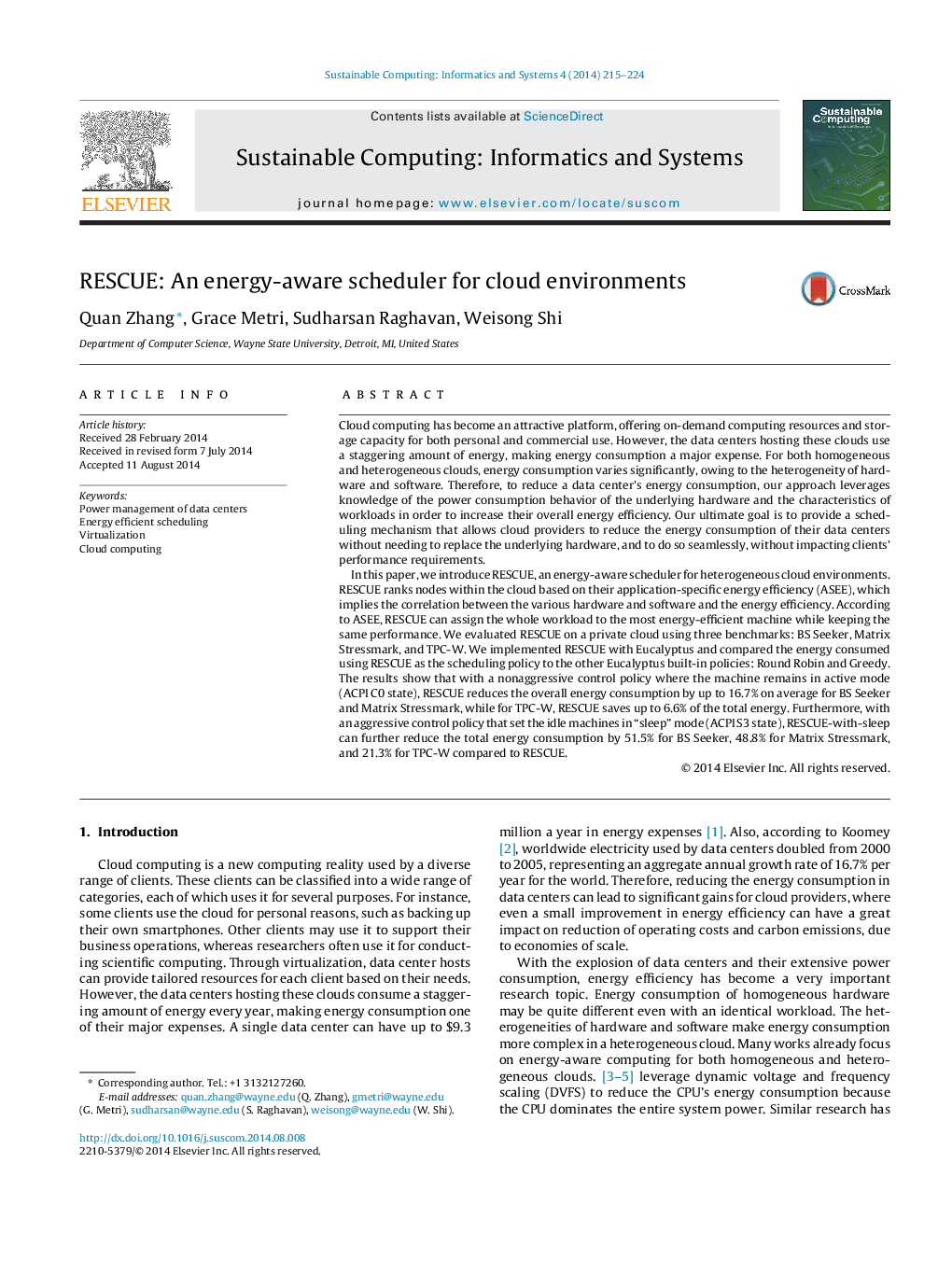| Article ID | Journal | Published Year | Pages | File Type |
|---|---|---|---|---|
| 493932 | Sustainable Computing: Informatics and Systems | 2014 | 10 Pages |
•We propose RESCUE for data center energy saving by leveraging ASEE, which will rank physical nodes based on their energy efficiency.•We evaluated RESCUE with three benchmarks: BS Seeker (CPU intensive), Matrix Stressmark (memory intensive), and TPC-W (e-commerce).•The results show that with a non-aggressive control policy, RESCUE reduces the overall energy consumption by up to 16.7% on average for BS Seeker and Matrix Stressmark. For TPC-W, RESCUE saves up to 6.6% of the total energy.•With an aggressive control policy, RESCUE-with-sleep can further reduces the total energy consumption by 51.5% for BS Seeker, 48.8% for Matrix Stressmark, and 21.3% for TPC-W compared to RESCUE.
Cloud computing has become an attractive platform, offering on-demand computing resources and storage capacity for both personal and commercial use. However, the data centers hosting these clouds use a staggering amount of energy, making energy consumption a major expense. For both homogeneous and heterogeneous clouds, energy consumption varies significantly, owing to the heterogeneity of hardware and software. Therefore, to reduce a data center's energy consumption, our approach leverages knowledge of the power consumption behavior of the underlying hardware and the characteristics of workloads in order to increase their overall energy efficiency. Our ultimate goal is to provide a scheduling mechanism that allows cloud providers to reduce the energy consumption of their data centers without needing to replace the underlying hardware, and to do so seamlessly, without impacting clients’ performance requirements.In this paper, we introduce RESCUE, an energy-aware scheduler for heterogeneous cloud environments. RESCUE ranks nodes within the cloud based on their application-specific energy efficiency (ASEE), which implies the correlation between the various hardware and software and the energy efficiency. According to ASEE, RESCUE can assign the whole workload to the most energy-efficient machine while keeping the same performance. We evaluated RESCUE on a private cloud using three benchmarks: BS Seeker, Matrix Stressmark, and TPC-W. We implemented RESCUE with Eucalyptus and compared the energy consumed using RESCUE as the scheduling policy to the other Eucalyptus built-in policies: Round Robin and Greedy. The results show that with a nonaggressive control policy where the machine remains in active mode (ACPI C0 state), RESCUE reduces the overall energy consumption by up to 16.7% on average for BS Seeker and Matrix Stressmark, while for TPC-W, RESCUE saves up to 6.6% of the total energy. Furthermore, with an aggressive control policy that set the idle machines in “sleep” mode (ACPI S3 state), RESCUE-with-sleep can further reduce the total energy consumption by 51.5% for BS Seeker, 48.8% for Matrix Stressmark, and 21.3% for TPC-W compared to RESCUE.
